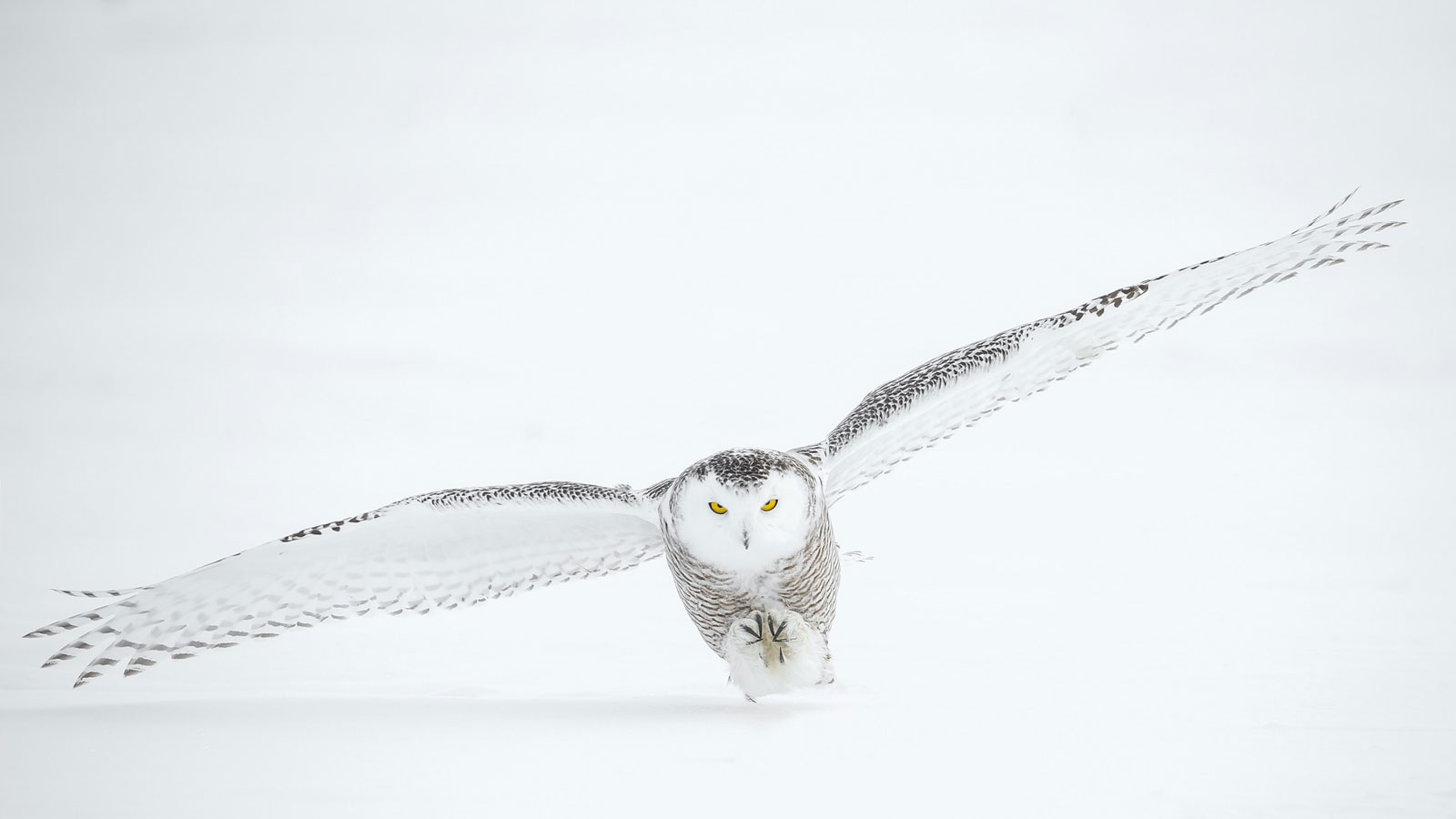The snowy owl, Bubo scandiacus, a denizen of the high Arctic, evokes a unique fascination. Its striking white plumage against the stark, snow-covered landscape is immediately captivating. However, this aesthetic appeal belies a suite of profound adaptations that enable it to not merely survive, but thrive in one of the planet’s most challenging biomes. The owl’s mastery of its environment stems from a fascinating interplay of morphological, physiological, and behavioral traits.
I. Plumage and Thermal Regulation
A. The Function of Feathers: The most conspicuous adaptation is, undoubtedly, the snowy owl’s predominantly white plumage. This isn’t merely camouflage, although that is certainly a beneficial aspect, allowing it to blend seamlessly with the Arctic terrain and ambush unsuspecting prey. The dense layering of feathers also provides exceptional insulation. These feathers trap a layer of air close to the owl’s body, minimizing heat loss via conduction. This is achieved, in part, by the barbules and hooklets on the feathers, which interlock to create a windproof barrier.
B. The Role of Melanins: Interestingly, the extent of white coloration varies with age and sex. Younger owls and females often exhibit more dark barring and spotting. This difference isn’t just aesthetic; melanin, the pigment responsible for dark coloration, also strengthens feathers. Thus, younger birds may require more robust feathers as they develop their hunting prowess and navigate harsher conditions. These dark patches contribute to increased feather durability. This subtle difference showcases the nuanced interplay between camouflage, thermoregulation, and feather integrity.
C. Countercurrent Heat Exchange: Beyond plumage, snowy owls possess a sophisticated circulatory system that further minimizes heat loss. A countercurrent heat exchange system in their legs ensures that warm arterial blood flowing towards the extremities passes close to cold venous blood returning to the body core. This allows heat to be transferred from the outgoing arteries to the incoming veins, pre-warming the blood before it re-enters the core and reducing the amount of heat lost to the frigid environment. This minimizes the energy expenditure required to maintain a stable body temperature. This is a crucial adaptation for survival in consistently sub-zero temperatures.
II. Hunting Adaptations: Sensory Acuity and Predatory Behavior
A. Asymmetrical Ear Placement: Successful predation in the Arctic requires exceptional sensory capabilities. Snowy owls possess asymmetrical ear placement, meaning that their ear openings are positioned at slightly different heights on their head. This asymmetry allows them to pinpoint the location of prey with remarkable accuracy, even when it’s hidden beneath a thick layer of snow. Sounds arrive at each ear at slightly different times and intensities, creating a binaural cue that the owl’s brain interprets to determine the precise location of the sound source. This adaptation is especially crucial during winter when lemmings, their primary prey, are often concealed beneath the snowpack.
B. Specialized Vision: Their vision is also finely tuned to the Arctic environment. Snowy owls have a high density of photoreceptor cells in their retinas, granting them exceptional visual acuity, even in low light conditions. The relatively large size of their eyes allows for increased light gathering. Their eyes are forward-facing, providing them with excellent binocular vision and depth perception, essential for accurately judging distances when pursuing prey. The nictitating membrane, a translucent third eyelid, protects their eyes from glare and blowing snow.
C. Hunting Strategies: Snowy owls are patient and opportunistic hunters. They often perch on elevated vantage points, such as hummocks or snowdrifts, patiently scanning the landscape for any sign of movement. Once prey is detected, they launch themselves in a swift, silent glide, using their broad wings to generate lift and their feathered legs to cushion the impact upon landing. Their sharp talons and powerful beak are perfectly adapted for seizing and dispatching prey. They are capable of consuming several lemmings per day, and their dietary needs are a major driver of their nomadic movements across the Arctic.
III. Nomadic Behavior and Breeding Strategies
A. Response to Prey Availability: The abundance of lemmings, their primary food source, fluctuates dramatically in multi-year cycles. Snowy owls are highly responsive to these fluctuations, exhibiting nomadic behavior in search of areas with plentiful prey. During years of lemming scarcity, they may abandon their breeding grounds entirely and move south to regions with more abundant food resources. This itinerant lifestyle reflects their profound dependence on a single prey species and the unpredictability of the Arctic ecosystem.
B. Nesting and Reproduction: When lemming populations are high, snowy owls are prolific breeders. They typically nest on elevated mounds or ridges that provide good visibility of the surrounding terrain. The female lays a clutch of eggs, with the number of eggs varying depending on prey availability. Both parents participate in incubating the eggs and caring for the young owlets. The success of their breeding efforts is directly linked to the abundance of lemmings; in years of scarcity, they may not breed at all.
C. Parental Care and Fledgling Development: The owlets are altricial, meaning they are born relatively helpless and dependent on their parents for food and warmth. The parents diligently provide them with a constant supply of lemmings, gradually teaching them how to hunt and survive on their own. The young owls fledge, or leave the nest, after several weeks, but they remain dependent on their parents for some time as they hone their hunting skills. The entire breeding cycle is a race against time, as the short Arctic summer imposes a strict deadline on their reproductive efforts.
In conclusion, the snowy owl’s survival in the Arctic is a testament to its remarkable suite of adaptations. From its insulating plumage and specialized circulatory system to its acute senses and nomadic behavior, every aspect of its biology is finely tuned to the demands of its harsh environment. The snowy owl stands as an emblematic species, a vivid illustration of evolutionary adaptation in one of the world’s most extreme ecosystems. Its continued presence serves as a poignant reminder of the delicate balance within the Arctic and the importance of preserving this unique biome.
